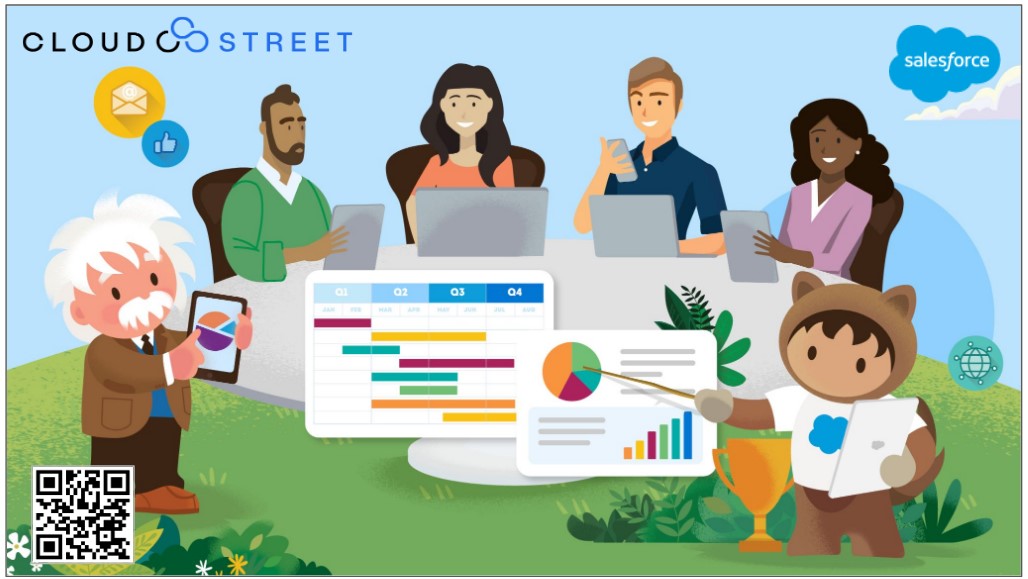
The rate of innovation is accelerating as 2022 draws to a close. When it comes to maximizing the potential of digital transformation projects, manufacturers must overcome a plethora of obstacles, many of which have more to do with mindset than technology.
However, right now, the moment is not to remain motionless. 2023 will be a year of ongoing innovation, development, and altering expectations in terms of digital transformation, with the shift to software-as-a-service (SaaS) platforms acting as the primary driving force. The moment has come to abandon on-premises software infrastructure and embrace what cloud-native solutions can offer the manufacturing industry, which is at a turning point.
Our prediction for 2023 is dominated by this recurring theme, “the year of SaaS.” Embracing what is possible with decentralized software solutions that favor simpler collaboration, increased productivity, and enhanced organizational flexibility is more important than merely upgrading the technology.
A detailed analysis of our projections for digital transformation in 2023 will be provided in this article. Have fun reading!
SaaS and Cloud Investments Dominate
The beginning of the tremendous acceleration toward decentralized digital infrastructure and the third anniversary of the COVID-19 pandemic both occur in 2023. The majority of industrial businesses (63%) feel that their enterprise software systems will continue to be competitive for about 2-3 years without upgrading or reinvesting. This implies that any firm that upgraded in 2020 before or at the beginning of the pandemic will probably be looking to reinvest in its software solutions, possibly around computer-aided design (CAD) or product lifecycle management (PLM).
For these manufacturers, choices are available. Many will decide to modernize their current legacy systems — which were probably created as on-premises solutions. The takeaway for any manufacturing company thinking about sticking with on-premises software infrastructure is clear: You may be at ease with on-premises, but you cannot assume your rivals are.
We predict that the excitement surrounding Cloudstreet will convert into larger expenditures as 2023 marks the third year of the pandemic’s arrival and many enterprises aim to improve their software systems. This does not imply that SaaS will completely replace on-premises systems, but many firms will seriously contemplate moving to the cloud.
Organizations Begin To Move Away from Waterfall Product Development to Agile Methodology
By its very nature, switching to cloud based software (aka SaaS) highly enables decentralizing your organizational architecture. This approach has significant benefits for organizations that have talent working offsite or scattered around the globe. With agile product development, you’ll find important new opportunities for faster and more stable development, not just for technology but also for fundamental workflow processes.
The established practice is known as sequential product development, sometimes referred to as waterfall product development. A product is developed in phases, and each phase has a set start date and end permission for the subsequent phase to commence. It is a downward spiral process, and any attempts to turn them around are time- and money-consuming.
Agile development methodology offers a far superior approach, with a strong focus on quickly delivering utility to end users. With Agile methodology, developers and product owners work together to define the deliverables, which are built, tested and pushed live in shorter sprints that are often only a few weeks in duration. Agile also allows teams to develop new features in parallel, which has the added benefit of being flexible enough to take advantage of new functionality that is delivered within SaaS platforms.
SaaS project management tools such as Jira are custom-built to manage projects that utilize Agile methodology. These tools provide Salesforce projects and other SaaS implementations with the framework required to successfully execute remote collaboration.
Continued and Deepening Flexibility in the Workplace
Many people think that the COVID-19 outbreak signaled the long-term transition to a previously unheard-of degree of remote and flexible labor. However, this isn’t completely accurate. There is a difference in that the epidemic compelled organizations to function remotely. But right now, the long-term shift is beginning to take shape completely. As with any substantial change, initial expenditures made to ensure operational life are now being reevaluated, and some are striving to return to pre-pandemic activities.
Although the factory or office may never totally disappear, there is a significant change in how people view their jobs. SaaS has produced a world where centralized operations are less necessary for critical work and productivity. We anticipate that 2023 will demonstrate that flexibility is not just here to stay but also that fully realized flexibility will look very different from the hasty response to the pandemic.
“Sustainable by Design” Products are Prioritized by Organizations
Sustainability will take on more importance across the extended enterprise as the effects of climate change worsen. As a result, there is a chance to include sustainability in every stage of the increasingly circular product lifecycle, which is required by law. The concept of “sustainable by design” is the foundation of the entire process; it entails conceiving and creating things with an eye toward their environmental impact and utilizing no more material than is required. Technology like generative design, which automatically ensures that only the needed materials are being used to build the strongest design, will be a driving force in this area thanks to artificial intelligence (AI), which is also expected to make significant strides in 2023.
Supercharge Your Business Process Transformation in 2023
The year 2023 will be one of development and crystallization. Now that the pandemic has been going on for three years, many businesses are wrapping up long-term investments in SaaS and cloud-native technology that will enable more advanced operations. Many manufacturers wanting to improve collaboration and shorten time to market may find CLOUDSTREET more enticing. The companies that can execute this securely and sustainably will be the leaders in 2023 and beyond.
Although we anticipate at least one or two surprises over the coming year, readers can count on the continuous expansion and popularity of SaaS platforms and services, along with all the opportunities that they entail.
More Case Study
CASE STUDY: Commerce Cloud Subscription Management
CLIENT: Manufacturing Company with Software
CHALLENGE: The manufacturer faced several challenges in offering a [...]


